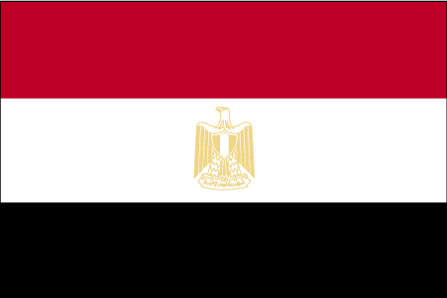To help inspire or plan your trip to Egypt, some of its major attractions
for travellers are shown below, including some of the best natural, historical, cultural and adventure sites in the country.
These include all of UNESCO World Heritage Sites for Egypt which represent the best
of the world's cultural and natural heritage.
Click on the icons below to focus on specific types of features
(click again to return to all).
|
|
|
|
|
|
|
|
|
|
|
|
 |
|---|---|---|---|---|---|---|---|---|---|---|---|
| Natural | History | Wildlife | Trekking | Cities | Religious Monument | Boat Journey | Rail Journey | Diving | Cultural | Adrenaline | UNESCO WHS |
Western Desert - Natural attractions
| Siwa Oasis | |
|---|---|
The oasis of Siwa lies in a shallow depression in the Western Desert, where more than 300 freshwater springs create a richly fertile and verdant landscape in complete contrast to its surroundings. Siwa is a Berber town with characteristic mud brick architecture and has a number of historical features of interest in its proximity. These include the crumbling ruins of the 13th century citadel at Shali, the hillside tombs at Gebel al-Mawta (Mountain of the Dead) and the Temple of the Oracle at Aghurmi where Alexander the Great confirmed he was the son of Amon and the son of Zeus before setting off to conquer much of Asia. | |
| White Desert | |
|---|---|
The White Desert is a surreal landscape of wind-eroded chalk formations that rise from the sands of the desert. These bizarre structures can be pinnacle, mushroom or dome-shaped and range in colour from bright white in the morning to orange and pink hues at sunset. | |
| Oases of the Western Desert | |
|---|---|
The Western Desert covers the vast area of Egypt to the west of the Nile Valley and forms part of the Sahara Desert. There are a number of oases which can be used to explore this region and provide interesting destinations in themselves. Kharga oasis west of Luxor is a renowned producer of dates and is a base for exploring the Persian period Temple of Hibis and the Christian burial ground at Al Bagawat, dating to between the 4th and 6th centuries and containing 263 mud brick tombs. Further west Dakhla Oasis has the fascinating medieval mud brick Islamic village of Al Qasr, with old schools, mosques and workshops. Deep in the desert this is an excellent spot for camel riding through the wilderness and sleeping out underneath the stars. North of Dakhla lies the Farafra Oasis, the smallest of the major oases and home to many Bedouin tribesmen. This is a good base for exploring the White Desert. Finally, Bahariya Oasis is surrounded by high escarpment and close to the recently discovered Valley of the Golden Mummies, tombs containing the mummies of ordinary Egyptians. | |
| Wadi Al-Hitan (Whale Valley) | |
|---|---|
Wadi Al-Hitan or Whale Valley in the Western Desert contains fossils of the earliest and now extinct order of whales, Archaeoceti. These fossils portray the evolution of whales from land-based to ocean-going mammals. UNESCO World Heritage Site: Wadi Al-Hitan (Whale Valley) | |
Sinai Peninsula - Natural attractions
| Mount Sinai | |
|---|---|
A trek to the summit of Mount Sinai is a relatively short and easy climb, taking no more than three hours to ascend. The views from the top over the Sinai mountains are spectacular though, especially at sunset or sunrise when the light casts brilliant colours over the desert. The ascent is a steep climb along the camel path followed by 750 stone steps to the summit. The descent can be along the same route or via the 3,000 'Steps of Repentance'. | |
| Red Sea | |
|---|---|
The Red Sea is one of the premier locations in the world for diving and snorkelling. In addition to the fascinating coral reefs and colourful marine life to discover underwater, the resorts along the Red Sea offer pristine golden beaches to relax on and warm, tropical waters to swim in. The main locations are Sharm el Sheikh, Dahab and Ras Mohammed on the Sinai Peninsula and Hurghada and El Gouna on the mainland. | |


